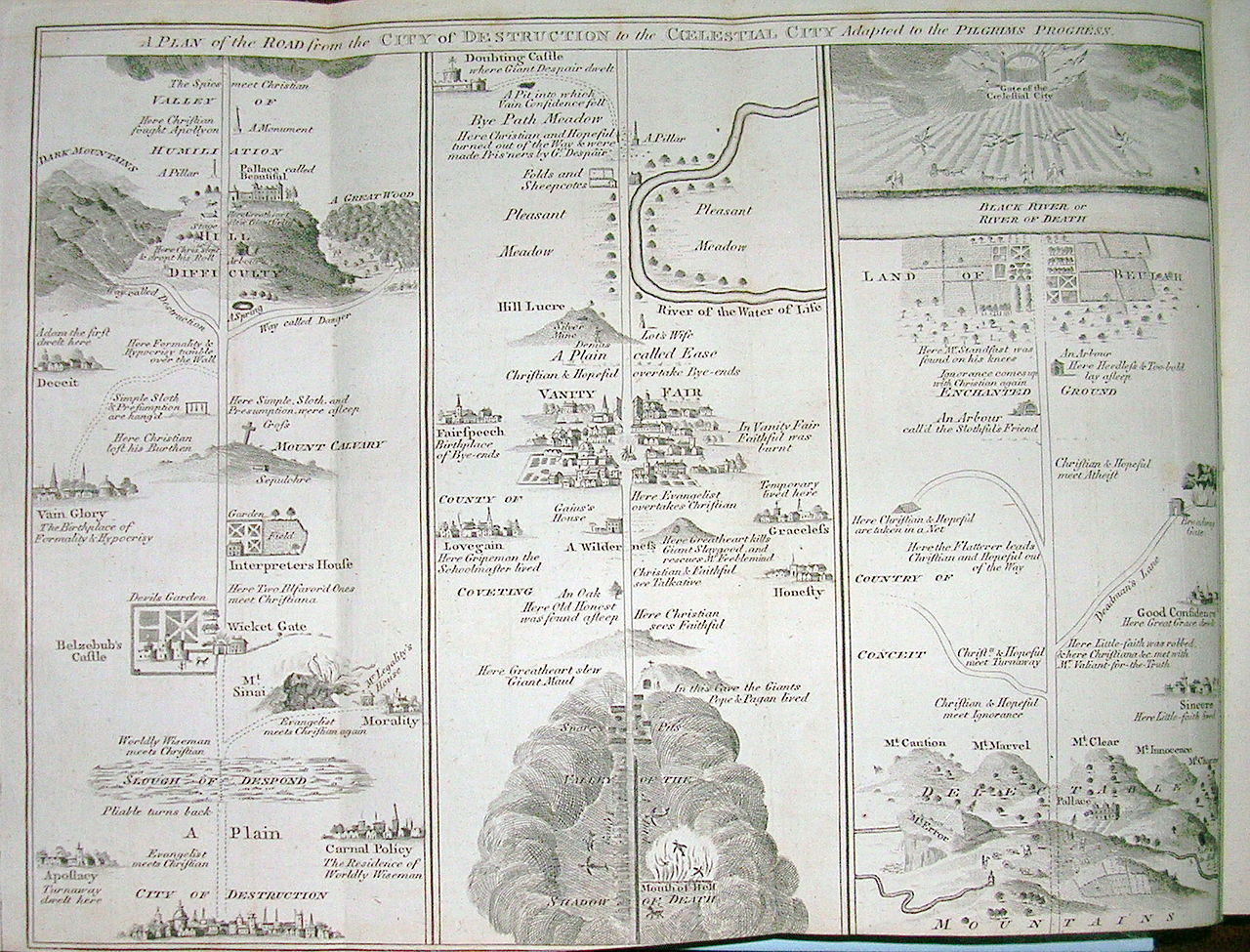Today, we will be settling that most vexed of questions: Aslan - is he Lawful Good or Neutral Good?
 |
| "Chaotic Good! He isn't a tame lion....." |
The likeness to Bunyan's classic The Pilgrim's Progress is intentional. But where that picks a path for it's everyman, Christian, along a path with features that have some claim to universality - the City of Destruction, the Slough of Despond, Vanity Fair - Lewis's latter-day variant draws a path between lands embodying philosophical impulses.
Thus, on Lewis's Mappa Mundi, we have the City of Claptrap, the Lands of Puritainia, Zeitgiesthiem and Hegeliana.
Of course, the trouble is that where the allegory of a quagmire for despair is rather good as these things go, Lewis was describing an intellectual journey "from 'popular realism' to Philosophical Idealism; from Philosophical Idealism to Pantheism; from Pantheism to Theism". A journey which, as he put it in a later introduction (written around 1942, if the comment about two powers tearing each other to pieces on the Don is anything to go by) "I committed the same sort of blunder as one who should narrate his journey through the Gobi desert on the assumption that this route was as familiar to the British public as the line from Euston to Crewe. And this original blunder was soon aggravated by a profound change in the philosophical thought of our age."
So, what we have is a somewhat personal work attempting to make universal an intellectual journey that was in fact rather specific (if not, per se, unique) to a time, a place and an individual. Though we are told that not everything is autobiographical. It is rather an interesting juxtaposition, and that can make for a fascinating read.
But to return to alignment. Lewis has put before us something akin to the cosmic allegiances of Dungeons and Dragons. A scheme of the world divided into broad philosophical camps; the north and south as shown across the divide - both of which are menaced by military railheads conveying the forces of evil (intended to look something like claws). Lewis's everyman, called -what else?- John, is born in Puritania, so there is the temptation to refer to one end of the map as having something to do with Simplicity or Naivete.
But this is not the great divide of The Pilgrim's Regress. That is between North and South. Again, from that introduction: "The Northerners are men of rigid systems whether sceptical or dogmatic, Aristocrats, Stoics, Pharisees, Rigorists, signed and sealed members of highly organised 'Parties'. The Southerners are by their very nature less definable; boneless souls whose doors stand open every day to almost every visitant, but always with the readiest welcome for those, whether Maenead or Mystogogue, who offer some sort of intoxication." Lawful and Chaotic? Perhaps the comparison could be made.
Lewis identifies his own time as Northern, and the Nazi and Soviet regimes as being Northern powers (they make an appearance the text as dwarven tribes "lots of subspecies besides the Marxomanni - Mussolimini, Swastici, Gangomanni...", all in service to a Norse "Heroic Nihilist" giant called Savage, complete with quotes from the Edda) although the Thirties also produced D.H. Lawrence and the Surrealists, who "have perhaps reached a point further 'South' than humanity ever reached before."
These extremes, it is to be noted, do not balance one another, but feed off one another: it is likened by Lewis to prohibition leading to extreme drunkenness. "Opposite evils, far from balancing, aggravate one another." The path of righteousness is between the two. This said, John and his fellow traveller Vertue are drawn by contradictory impulses, even if their goal is the same and they both must, by the end of their journey, slay a dragon dwelling at the extremes of North and South - and by this process be transformed.
There is more that could be said, but that seems enough for now. So: could one's journey through the cosmic planes involve a trip to Cruelsland and Zietgiesthiem, neighboring provinces of the realm of Lawful Evil? Would you be willing to play a campaign in which one could be a 'Northern' Good Fighter or a 'Southern' Neutral Rogue?


No comments:
Post a Comment